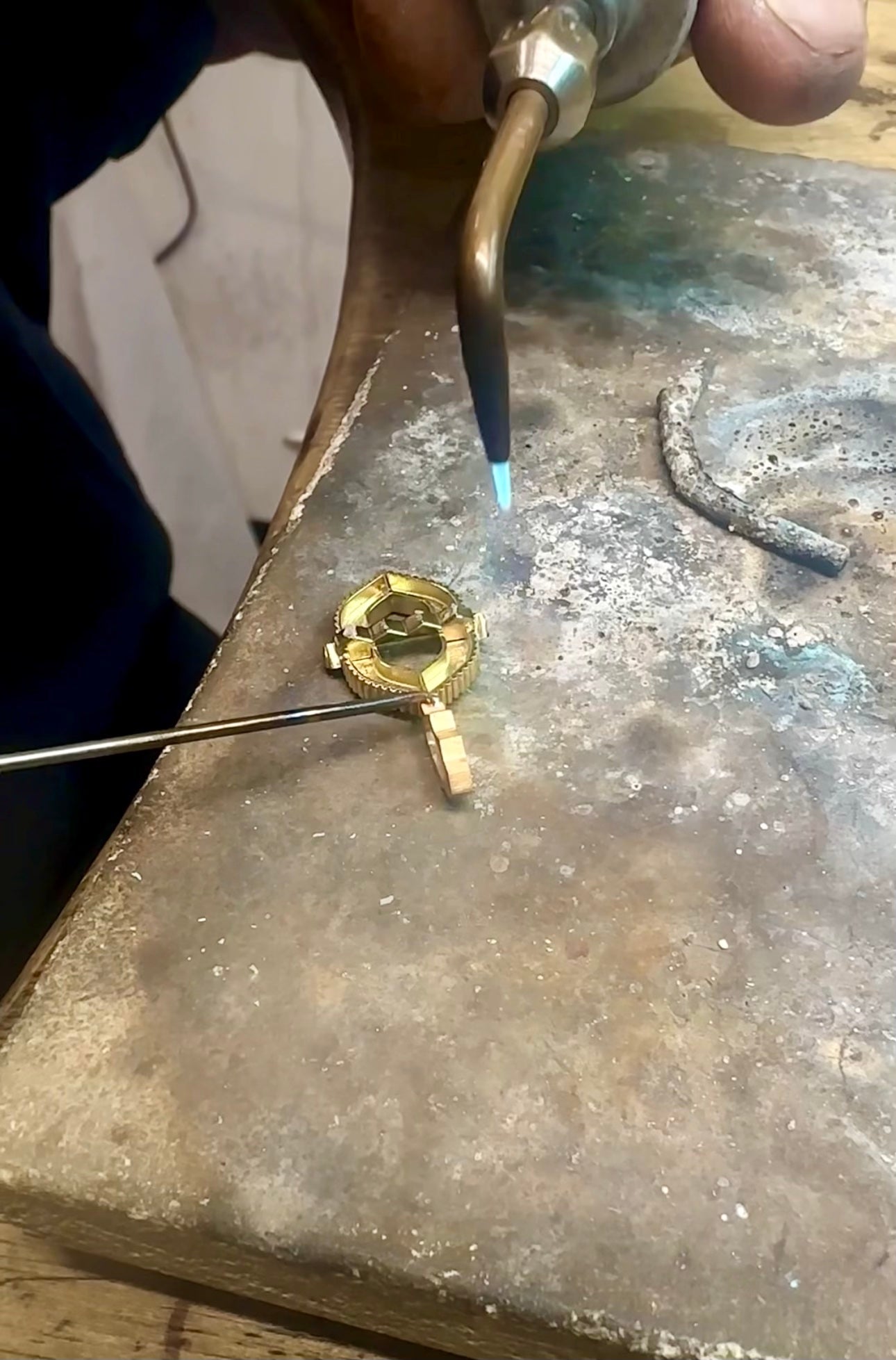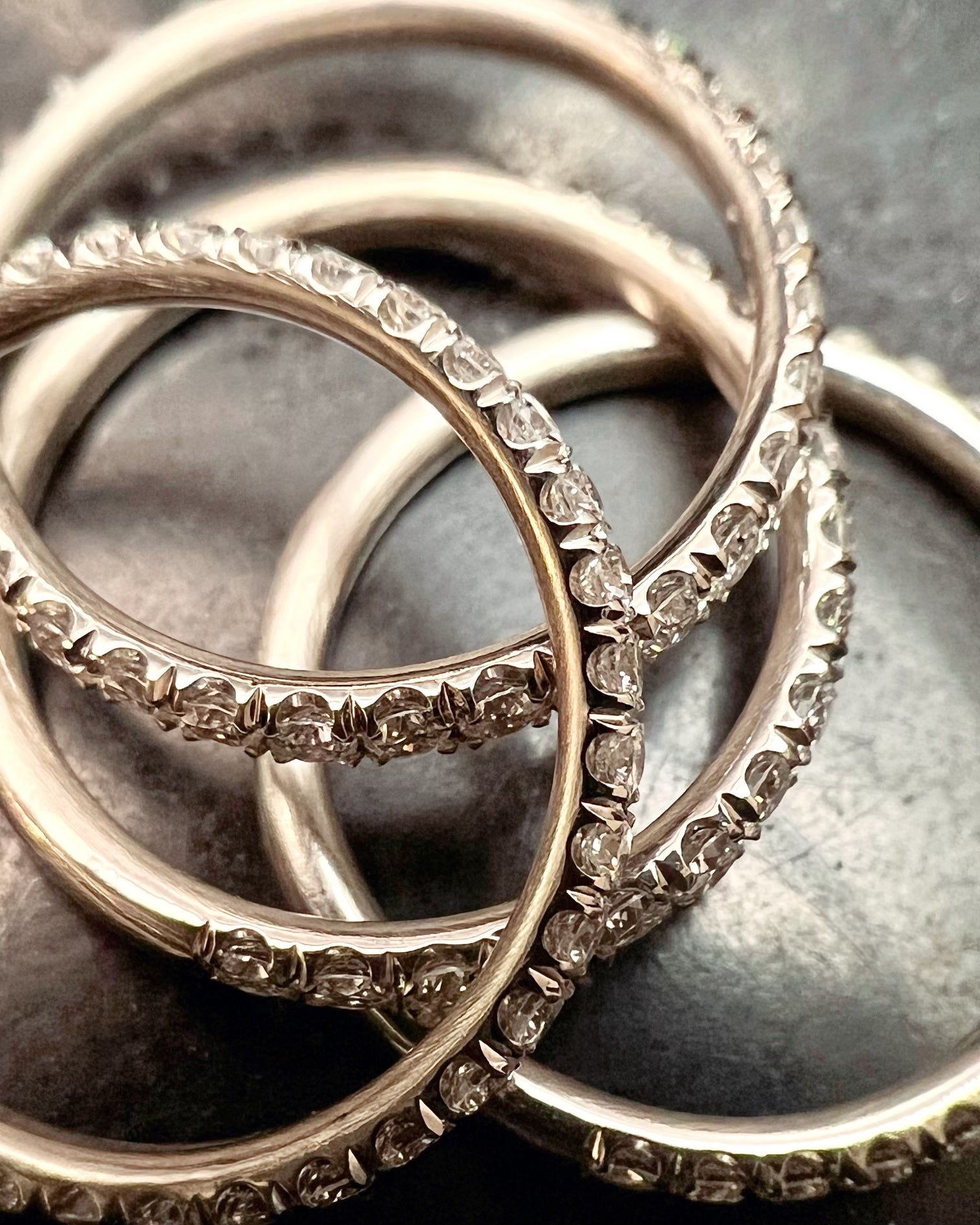Lab-Grown Diamonds: The Ethical, Environment, and Brilliant Alternative
| In recent years, the diamond industry has witnessed a transformative shift with the rise of lab-grown diamonds. These gems, cultivated through advanced technological processes rather than mined from the Earth, have garnered attention for their ethical sourcing, environmental sustainability, and undeniable brilliance. |  |
What are Lab-Grown Diamonds?
Lab-grown diamonds, born from a fusion of innovation and ethical considerations, have emerged as a brilliant alternative
to their mined counterparts. Cultivated with precision in controlled laboratory environments, these diamonds share
the same captivating beauty and enduring qualities as naturally occurring diamonds. Harnessing advanced
techniques like High-Pressure High-Temperature (HPHT) and Chemical Vapor Deposition (CVD), lab-grown
diamonds replicate the geological conditions under which diamonds form, resulting in gems that are physically,
chemically, and optically indistinguishable from those found in the Earth's mantle.
zirconia or moissanite, which have different chemical compositions and physical properties. Lab-grown diamonds
are composed of carbon atoms arranged in a crystal lattice structure, just like natural diamonds. Both naturally-
mined and lab-grown diamonds rank a 10 on the Mohs scale, the highest level of hardness.
Why are Lab-Grown Diamonds Considered Ethical?Lab-grown diamonds are celebrated for their ethical sourcing. Unlike traditional mined diamonds, which can sometimes be associated with conflict or "blood diamonds," lab-grown diamonds are created in controlled environments, ensuring ethical and transparent practices. This has resonated with consumers who seek assurance that their purchase aligns with ethical values. The environmental impact of diamond mining has been a longstanding concern. Lab-grown diamonds, however, offer a more sustainable alternative. The cultivation process requires significantly less land disruption and water usage compared to traditional mining operations. Additionally, lab-grown diamonds minimize the ecological footprint associated with transportation, as they don't need to be extracted from distant mines. |

|
How are Lab Grown Diamonds Made?
The process of creating lab-grown diamonds involves cutting-edge technological advancements. High-pressure
high-temperature (HPHT) and chemical vapor deposition (CVD) methods are commonly employed. These techniques
mimic the natural conditions under which diamonds form but allow for precise control over the diamond's
characteristics, resulting in gems of exceptional quality.
Natural diamonds are formed deep within the Earth’s mantle through a process that takes millions to billions of
years. Diamonds form under extreme conditions of high pressure and high temperature. These conditions are
typically found in the Earth’s mantle, where temperatures reach around 1,652-2,372 degrees Fahrenheit and the
pressure is high. The resulting lab-grown diamonds are then cut, polished, and graded using the same criteria
as natural diamonds, including the 4 Cs: cut, color, clarity, and carat weight.
There are two primary methods used to create lab-grown diamonds:

|
I) High-Pressure High-Temperature (HPHT) The process begins with a carbon source. The carbon source can be a small natural diamond seed or a carbon-rich material. The choice of the carbon source influences the characteristics of the resulting synthetic diamond. In this method, carbon atoms are subjected to high pressure (around 5-6 gigapascals or Gpa) and high temperature (about 2,552-3,272 degrees Fahrenheit), replicating the natural conditions found in the Earth's mantle where diamonds form. This elevated temperature is essential for the carbon atoms to rearrange and form the crystal lattice structure characteristic of diamonds. The high pressure and high temperature contribute to the formation of a diamond crystal that shares similar physical, chemical, and optical properties with natural diamonds. After the desired diamond size is achieved, the press is slowly cooled down. The cooling process is critical to stabilize the synthetic diamond and prevent structural changes. Once the HPHT process is complete, the synthetic diamond is extracted, and the rough diamond is then cut and polished to meet the desired specifications. |
|
II) Chemical Vapor Deposition (CVD) CVD involves introducing a hydrocarbon gas into a controlled environment, where it is then broken down into carbon atoms. Unlike the HPHT method that stimulates the Earth's mantle conditions, the CVD process involves deposition of carbon atoms that settle on a substrate, usually a thin slice of diamond, and gradually crystallize, layer by layer, forming a larger diamond. This process mimics the way diamonds grow in the Earth's mantle over an extended period. The CVD process begins with the introduction of gases into a vacuum chamber. Typically, a hydrocarbon gas, such as methane, is used as the carbon source. The chamber is then evacuated to create a low-pressure environment. The gases are then activated using various methods, often through the application of microwave energy or radio frequency energy. This activation breaks down the hydrocarbon molecules, releasing carbon atoms, which then settle onto a substrate. As the carbon atoms continue to accumulate on the substrate, they bond together to create the crystal lattice structure characteristic of diamonds. The crystal grows lay by later and the controlled conditions allow for precise control over the diamond's characteristics. The controlled environment within the chamber allows for the creation of diamonds with specific qualities. Once the desired thickness of the diamond film is achieved, the substate is then cooled and the synthetic diamond is extracted from it. |
 |
HPHT Versus CVD Diamonds
HPHT diamonds generally grow faster and have a longer presence in the market compared to CVD diamonds.
HPHT diamonds are also more expensive because the process can be more energy-intensive. CVD diamonds
are often considered more cost-effective due to the ability to control growth conditions more precisely.
during growth, while CVD diamonds are known for exceptional purity and minimal inclusions, often achieving
high clarity.

ABOUT US
OUR MISSION
To redefine fine jewelry by creating exclusive designs that celebrate individuality and craftsmanship, all without the traditional retail markups, providing true value directly to our customers.
Fine Jewelry with a Refined Sense of Noblility
Vardui Kara is a fine jewelry collection founded on the principles of exploring new and experimental concepts, while collaborating with the most skillful artisans in Los Angeles to create timeless pieces with collector's appeal. The line incorporates multi processes of design and stone setting to intrigue the women who believe everyday jewelry does not need to be basic.
Jewelry holds a personal meaning to us all and that is why we have set out to create something authentic and modern that helps a woman tell her story. Unique details and a balanced design come together to encourage a refined self-expression.
Why We Are Different
Exclusive Collections
We believe in the rarity of true beauty. That's why we offer limited edition collections and exclusive designs that are not widely available. Our jewelry is meant to feel personal and precious, giving you something truly special that you won't see on everyone else.
Our Commitments
Exceptional Customer Experience:
At the heart of our brand is our commitment to providing an extraordinary customer experience. From your first inquiry to the moment you wear your new piece, we are with you every step of the way. We believe in building lasting relationships with our clients, ensuring every interaction is personal and memorable.
We Have Said Bye To:
Wholesale distribution markups, excess assortment, production markups, import costs, retail markups, and sales commissions.Unlike the traditional jewelry industry, we set out to launch our own model to design, create, source, and sell fine jewelry directly to you. Instead, we focus on thoughtful product assortment, responsible production, quality materials made to last a lifetime, working with local manufacturers, and handling the shipping ourselves.
To put it simply, our jewelry is handcrafted with the same high quality materials and craftsmanship as other luxury jewelry brands without the traditional markups.

Our Jewelers
We spent two full years searching Los Angeles to find the best master jewelers for our various collections. Some of the jewelers we work with are third-generation craftspeople. All of them are committed to excellent and intricate craftsmanship on producing quality pieces. We value each artisan for their unique skills such as soldering, stone setting, or sandblasting. By making each jewelry item to order, we support local and talented artisans while, at the same time refusing the purposeless wastage often seen from mass productions.

Meet our Designer
Growing up in Downtown Los Angeles' Jewelry District as the daughter of a precious metals dealer, Vardui Karaoglanyan was influenced by the creative freedom and expertise around her. After earning a degree in Economics and Finance, she trained under sculptural jewelry designers, developing her own style that blends modern minimalism with bold architectural influences. Her designs are inspired by Renaissance themes and feminine strength, featuring 14 and 18 karat recycled golds, and ethically-sourced diamonds. Each piece is crafted to make a powerful statement, with a balance of elegance and daring edginess, perfect for layering and mixing.
Vardui Kara aims to offer exclusive designs to create a collector's mentality, all without the traditional retail markups, making luxury more accessible.
Personalization
One-Of-A-Kind Options
Your style is uniquely yours, and your jewelry should reflect that. That is why we offer customization options that allow you to create one-of-a-kind pieces, tailored to your taste and vision. Whether it’s a personalized engraving or a custom design, we’re here to bring your ideas to life.

Our Materials & Ethics
Our collections are handmade in Los Angeles and created from rich 14-karat and 18-karat golds, sterling silver, and full-cut diamonds. We make it a priority to work with local, reputable suppliers who share our values of ethical and conscious production. We use recycled precious metal and our diamonds are sourced from trusted partners who guarantee their product to be conflict-free. We inspect every single stone and ounce of gold to be certain it meets your highest standards and exceeds your highest expectations. Our jewelry is designed to last.
